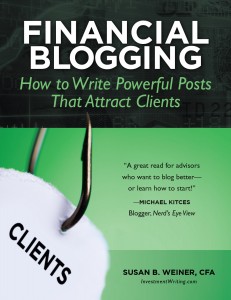AUGUST NEWSLETTER: Does writing with AI hurt your ability to think?
Writing using artificial intelligence (AI) can save you a lot of time. But what effect does it have on your ability to think?
In “Should we fear cognitive debt?” a podcast interview by Deep Work author Cal Newport, either author Brad Stulberg or Newport said that we sacrifice cognitive fitness when we use AI to write. Also, “my thinking is what I’m paid for,” and AI can’t communicate that, so professional writers shouldn’t use AI to draft their writing.
Here’s a link to the MIT study, “Your Brain on ChatGPT: Accumulation of Cognitive Debt when Using an AI Assistant for Essay Writing Task,” that underlay their comments about AI-assisted writing. The study compared users of the large language models (LLM) that are key to AI. It concluded
Over four months, LLM users consistently underperformed at neural, linguistic, and behavioral levels. These results raise concerns about the long-term educational implications of LLM reliance and underscore the need for deeper inquiry into AI’s role in learning.
All of us who could calculate sums in our heads as children know that not using that part of our brain has made us less adept at such mental calculations. Something similar probably happens when we rely on AI to write.
Fatal flaws of case studies
Case studies can be great marketing tools for investment and wealth managers. But sometimes case studies fail.
Learn about their fatal flaws in “How Do Case Studies Go Wrong? Let’s Count the Ways – and How to Fix Them” by Michelle Rafter of the American Society of Journalists and Authors.
To fix the flaws, Rafter recommends that you:
- Include enough details and data, including the initial outcomes at a minimum.
- Omit extraneous details.
- Avoid jargon and acronyms.
- Emphasize how the client used the product or service more than the details of the product or service.
On a related note, read my take on the problems that derail white papers: “The compelling investment white paper that wasn’t.”
Your house cleaner’s insurance might fall short
Did you breathe a sigh of relief when your house cleaner sent you a certificate of insurance? Stop! That might not cover what you expect.
I checked that the company that did a deep clean for me had insurance, but I didn’t delve into the details until after the cleaners damaged a table. Then, I discovered that the insurance didn’t cover damage done during the cleaners’ work.
Here’s what commercial insurance agent Traci Eagles told me that cleaners should look for:
I’m an insurance agent, and the coverage that you should look for on your policy is called “voluntary property damage.”
Without this endorsement, if you damage property that is in your care, custody, or control, the General Liability policy won’t respond because this is excluded.
You have to ask for it to be added, and it’s not that much more in premium to add.
It pays to be skeptical. After my bad experience, I called the insurance agent listed on another service provider’s certificate of insurance and discovered that the certificate was not valid. The service provider apparently had no insurance at all.
Summer flowers
I’m enjoying the flowering of my coneflowers and lamb’s ear. Plus, I enjoy the soft, fuzzy texture of the lamb’s ear’s leaves.

What my clients say about me
 “Fast, effective, insightful. I can think of no better resource for superior financial writing.”
“Fast, effective, insightful. I can think of no better resource for superior financial writing.”
“Susan has an exceptional ability to tailor investment communications to the sophistication level of any audience. She has an uncanny ability to make very complex investment and/or economic topics accessible and understandable to anyone.”
“Susan’s particularly good at working through highly technical material very quickly. That’s very important in this business. A lot of people are good writers, but they have an extensive learning curve for something they’re unfamiliar with. Susan was able to jump very quickly into technical material.”
Improve your investment commentary
Attract more clients, prospects, and referral sources by improving your investment commentary with 44 pages of the best tips from the InvestmentWriting.com blog.
Tips include how to organize your thoughts, edit for the “big picture,” edit line by line, and get more mileage out of your commentary.
Available in PDF format for only $9.99. Email me to buy it now!
Boost your blogging now!
Financial Blogging: How to Write Powerful Posts That Attract Clients is available for purchase as a PDF ($39) or a paperback ($49, affiliate link).








Leave a Reply
Want to join the discussion?Feel free to contribute!